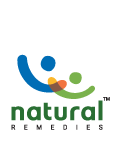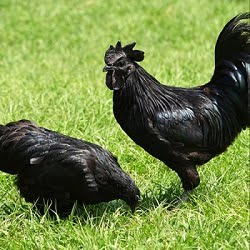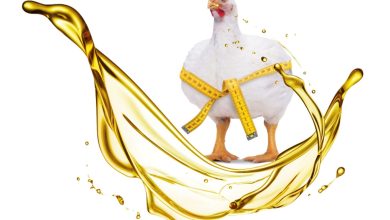HAZARD ANALYSIS AND CRITICAL CONTROL POINT ( HACCP )

K. Shibi Thomas and V. Jayalalitha
Veterinary University Training and Research Centre,
Tamil Nadu Veterinary and Animal Sciences University (TANUVAS),
7/2, Kozhi Pannai Road, Kottapattu,
Tiruchirapalli – 620 023
HACCP was first developed in 1959 by the Pillsbury Company while it was trying to produce microbiologically-safe foods for use in NASA space flights. However, HACCP was not introduced to the public until 1971. Initially, interest in HACCP was limited because it is a difficult system to implement.
A 1985 report from the National Academy of Science Food Protection Committee renewed inter¬est in HACCP by suggesting that it was the most effective method for ensuring food safety. In 1996, the United States Department of Agriculture Food Safety and Inspection Service (USDA-FSIS) passed a new regulation known as the “FSIS Pathogen Re¬duction/HACCP Regulation,” which requires meat and poultry plants to use HACCP in their opera¬tions.
HACCP is a system of extensive evaluation and control over an entire food production process for the sole purpose of reducing potential food-related health risks to consumers. An HACCP program maintains safety and wholesomeness of meat and poultry because potential hazards that may occur during processing are anticipated, evaluated, con¬trolled and prevented.
A hazard is defined as any biological, physical or chemical property that could cause a product to be unsafe for consumption. Pro¬cessing plants are required to have a HACCP plan for each product. The following list includes general steps for developing a HACCP plan:
Management must provide financial and philo¬sophical support. HACCP is a pro¬gram for the entire company; therefore, a team of individuals from different areas of production and processing should be involved in develop¬ing the HACCP plan. Plants are required to have a HACCP plan for each product they make. All employees should be given HACCP training to impart the main overview of HACCP, as well as information regarding the companies HACCP policies and procedures.
The seven principles of HACCP as defined by the National Advisory Committee on Microbiological Criteria for Foods is as follows
• Conduct an analysis of the hazards in the plant and a list of all processing steps where a hazard can happen is prepared
• Identify all critical control points (CCP’s) in the process. CCP’s are critical to the safety of the product
• Establish a critical limit for each of the identified CCP’s
• Establish CCP monitoring requirements
• Establish corrective action to be taken if the CCP deviates from the critical limit
• Establish effective record-keeping procedures to document the HACCP program
• Establish a procedure to verify that the HACCP program is working
The HACCP programme can be implemented in any processing viz, broiler production, egg production, broiler processing, egg processing, feed manufacturing etc, to ensure food safety to the end consumer. The poultry industry has long recognized the importance of providing Salmonella-free feed to laying hens. Accordingly, there has been increased focus on feed as a source of bacterial contamination of poultry production units.
Principle 1: Hazard Analysis
Hazard analysis can be based on known feed contaminants and/or error-prone areas that could compromise feed safety. The majority of these, such as Salmonella contamination are directly related to possible effects on food safety, whereas others are based on the necessity to avoid performance-related problems in livestock, such as rancidity in fats and incorrect pellet size. The biological hazards in feed milling are microbiological contamination, parasites, prohibited mammalian protein and decomposition in feed and feed ingredients when a hazard has been associated with decomposition. Chemical hazards include veterinary medications, pesticide/ industrial contaminants, natural toxins, including toxic plants, heavy metals, minerals, unapproved feed ingredients and food additives. Physical hazards include stones, wood, metal, glass and plastic.
The table below shows the list of risks associated with feed milling
| High Risk / Major Severity | Low Risk / Minor Severity |
| Salmonella contamination | Excess Pesticides (OP’s / OC’s) |
| Weed seed contamination | Rancidity |
| Moulds and mycotoxins – ex cooler | Moulds & Mycotoxins – incoming raw materials |
| Metal contamination Excess | Biogenic amines |
| Meat meal in ruminant feeds | Excess heavy metals |
| Wrong RM or medication / amount in feed / cross-contamination | Pellet size |
| Wrong batch sequencing / flushing order | Incoming raw materials to incorrect silo / bin / tank |
| Insufficient mixing | Feed to incorrect out loading bin |
| Incorrect feed labeling / dispatch / unloading |
Principle 2: Critical Control Points (CCP’s)
The following decision tree process was used to identify CCP’s in the milling process:
• Do preventative / control measures exist for the identified hazard?
• Is the step specifically designed to eliminate or reduce the likely occurrence of a hazard to an acceptable level?
• Could contamination occur or increase to unacceptable level(s)?
• Will a subsequent step or action eliminate or reduce the hazard to an acceptable level?
Principle 3: Critical limits
• Once the critical control points are established, the HACCP team, identified the maximum/ minimum values needed to prevent, eliminate or reduce hazards to an acceptable level.
• Consideration should be given to using pelletized/ crumbled feed during this time of high susceptibility to salmonellosis since the temperature achieved during the pelletizing process is effective in killing salmonella.
Principle 4: Monitoring
• Every feed mill should monitor that point for pathogens on a regular basis, and have a plan for corrective action if contamination is discovered. Ingredient inventories should be matched with the diets mixed and the flocks to which they are delivered. A bank of feed samples should be established so that they are available for analysis in the event a trace-back situation arise. Feed samples should be sealed and stored in a clean, dry location. Each feed ingredient used in the milling of finished feed has its own unique risk of being contaminated.
• High risk ingredients should be screened carefully. Generally, animal proteins have higher levels of salmonella contamination than do plant proteins. Poultry offal meal and feather meal should be considered high risk ingredients. Buffer zones in feed mills will prevent nonemployees from entering the feed milling plant.
• Visitors should be considered to be contaminated and provided with coveralls, disposable shoe covers, sanitized rubber boots, or other appropriate biosecurity measures. Rodents and wild birds must not be allowed in or near a milling facility.
• Nesting materials should be removed and potential nesting sites eliminated. Dust control in the feed milling facility is essential for controlling salmonella. Dust is the major source of salmonella contamination in feed mills. Store all raw feed ingredients in clean, waterproof silos. Transportation vehicles should be inspected and sanitized on a regular schedule. Litter, offal, and carcasses should never be hauled by the same vehicles that haul feed ingredients or finished feed. Designated trucks should be used only to deliver feed to breeder flocks.
• The feed milling facility’s air handling system should be segregated by location. Air inlet areas (stacks) for pellet cooling can be a major source of microbial contamination and should be designed and located so as to minimize contamination of finished pellets by providing clean incoming air. Air handling systems should be cleaned thoroughly on a scheduled basis. Air filters should be able to remove all dust (>= 5 micrometers). Bin cleanliness in the feed storage area is essential and should be monitored on a regular basis. Unsanitary conditions should be rectified. Feed spills should be cleaned up immediately.
• Carry over tests and random residue tests should be carried regularly to identify the possible cross contamination of additives. Surfaces of batch scales and mixers should be periodically inspected and cleaned of adhering feed materials. Finished pellets must not be allowed come into contact with objects prior to falling in to the cooler.
• Pellets falling on the floor must be considered a possible source of contamination and should not be added back to the finished feed. Liquid fat application devices designed to apply fat to pellets must be kept sealed, be operated in dust-free locations, and be cleaned daily. Ground corn containing organic acids should be used daily to clean conveyors between fat application devices and feed storage. Separate storage bins and trucks must be assigned for mash and pelleted feeds. These bins and trucks must be inspected and cleaned regularly. Feed delivered to farms in bulk or in bags must be placed in clean storage bins or areas.
• All grain and pulse purchases must meet strict standards, including weed seed contamination. Raw materials with insect infestation and physical contamination such as metal objects, rocks and paddock trash should be rejected.
Principle 5: Correction
• The establishment should have written corrective action to predetermine the corrective action to be taken whenever there is a deviation from a critical limit.
• A corrective action plan that is appropriate for a particular deviation is one that describes the steps to be taken and assigns responsibility for taking those steps, to ensure that no feed or feed ingredient adulterated as a result of the deviation is distributed or used after the deviation has been identified and before corrective actions are taken; and the cause of the deviation is corrected.
• When a deviation from a critical limit occurs, and the establishment does not have a corrective action plan that is appropriate for that deviation, the establishment should segregate and hold the affected feed or feed ingredient, until thoroughly tested for quality.
Principle 6: Recording
• Each feed mill establishment should maintain written hazard analysis and written HACCP plan. Records documenting the ongoing application of the HACCP plan that include: monitoring of critical control points and their critical limits, including the recording of actual times, temperatures, or other measurements, calibration of key manufacturing equipment, and the performance of any periodic end-product and in process testing; calibration of process monitoring instruments, and the performance of any periodic end-product and in process testing; and corrective actions, including all actions taken in response to a deviation and disposition of the product produced during the deviation should be recorded. Records documenting verification and validation of the HACCP plan should be maintained.
Principle 7: HACCP Verification
• The verification activities include a review of any consumer complaints received by the establishment which are related to feed safety to determine whether such complaints relate to the performance of the HACCP plan or reveal previously unidentified hazards; and calibration of key manufacturing equipment, including scales/metering devices and mixing equipment; calibration of process monitoring instruments;
• A review on critical control point monitoring records, corrective action records, calibration records of key manufacturing equipment used at critical control points, including scales/ metering devices and mixing equipment and the performance of any periodic end-product or in-process testing that is part of the establishment’s verification activities. The purpose of these reviews will be, at a minimum, to ensure that the records are complete and that these activities occurred in accordance with the establishment’s written procedures. These reviews will occur within one week (7 days) of the day that the records are made;
• Each establishment should validate that the HACCP plan is adequate to control hazards; this validation will occur at least once within 12 months after implementation and at least annually thereafter or whenever any changes in the process occur that in any way could affect the hazard analysis or alter the HACCP plan in any way occur. Such modifications to the process may include changes in the following: raw materials or source of raw materials; product formulation methodology; manufacturing methods or systems, including computers and their software; key manufacturing equipment including scales/metering devices and mixing equipment; packaging; finished product distribution systems; or the intended use or consumers of the finished product. The HACCP plan should be modified immediately whenever a validation reveals that the plan is no longer adequate to fully meet the requirements of this part.



